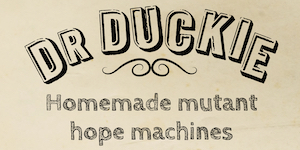
I reviewed The Eyes of Orson Welles, Mark Cousins’s terrific documentary about Welles’s drawing and painting, for Sight and Sound. The review is reprinted with permission.
In 1934, when he was still a teenager, Orson Welles published acting editions of three Shakespeare plays, produced with his teacher and friend Roger Hill. Everybody’s Shakespeare, as the project became known, was widely used in schools for decades and remains exceptional in many ways, not least its evidence of Welles’s precociously vivid talent and its dramaturgical urgency and irreverence in an era of fusty bardolatry. The most compelling element of the books, though, might be the illustrations with which Welles furnished them, a cornucopic array of proposed set designs, lighting arrangements, character sketches and dramatic blocking.
Dazzlingly diverse in style, accomplished yet seemingly breezy in execution, they constitute the microcosmic public debut of Welles’s genius, a register of storytelling that harmoniously melded the narrative and visual, the heroic and the absurd, the tale and its telling. Everybody’s Shakespeare insists that Shakespeare – in fact, drama – is not only text but image too. Welles was known for his voice but he thought with his eyes.
Welles sketched, drew and painted throughout his life, as preparation for theatre and film work, as a form of conversation with loved ones and simply for the pleasure of imagemaking. In The Eyes of Orson Welles, Mark Cousins brings this aspect of his output to the fore in an unprecedentedly sustained way, offering a discursive, affectionate and insightful tour through the world as Welles filtered it through his fingers onto paper and canvas. It’s a love letter to Orson, with Cousins’s epistolary second-person voiceover conjuring Welles as a live interlocutor, informing him of the ways the world has changed since he died in 1985, noting how life has become more visual, more connected and more alienated, tantalising him with news of the internet and demonstrations of cheap digital filmmaking technology.
Some looming, angular cityscapes aside, Cousins avoids aping a Wellesian aesthetic, instead revisiting key biographical sites with poignant stillness and letting Welles’s artworks speak for themselves. Cousins frames them within a sequential thematic argument engaging with Welles’s formative years, his admiration for working people, his intemperate passions, his fascination with power and his appreciation of the absurd. It’s a rich and rewarding approach to a full life, able to encompass Rembrandt and Rita Hayworth and offer new vistas on familiar biographical moments including Welles’s vociferous defence of a black veteran assaulted by a policeman and the emotional toll of his banishment from the editing of Touch of Evil (1958).
The work on show derives from a trove to which Welles’s daughter Beatrice gave Cousins access and other archives, and some of it is animated to show lines walking across the page or washes washing in. The styles are eclectic, dynamic, usually intensely characterful. Here, exaggerated but not quite caricatured, are the individuals sketched on the hoof during teenaged travels in Ireland and Morocco; here, simple and oppressive, is the essence of the stark lighting marking Julius Caesar on Broadway and The Trial on screen; here, almost audible in their pomp and clatter, are ideas for knights at Shrewsbury; here, in wistful, broken ochres and whites, is the scorched and florid Arizona desert that kept Welles company later in life.
There’s a heroic canvas of Don Quixote and another of a matador, each flecked with celestial light and sentimentality. Most intimately, there are the private communications. Across dozens of Christmas cards, trees grow more abstract and Santa gets bigger, bleaker and boozier. Self-caricatures, in which depression and apology mingle with humour and self-aggrandisement, give us Orson as devil, Orson as sadsack, Orson as regal roué.
There are numerous connections, implicit and overt, to Welles’s film work. Early cartoons and elements of artistic study are linked to later output: perhaps the Thorne miniature rooms on show at the Art Institute of Chicago influenced the precise interiors of Citizen Kane (1941) and The Magnificent Ambersons (1942); maybe the “real people” glimpsed and delineated in the Kasbah anticipated those filmed in Brazil for the unfinished It’s All True. Welles’s bold, charming and experimental 1950s travelogues might have illustrated this point further but, as so often, the TV work doesn’t get much of a look-in here; even Orson Welles’ Sketch Book (BBC, 1955), a rare project structured precisely around Welles as draughtsman, is glanced at rather than fully unpacked.
There is, however, extensive and welcome exploration of The Lady from Shanghai (1947) and Mr Arkadin (1955), two campy, baroque features commonly overlooked or downplayed. Their grotesque, irregular, dreamlike and sometimes surreal pictorial gambits are more appreciatively framed by Cousins’s articulation of Welles’s voracious visual sensibility.
There’s also a lot of love for the Shakespeare adaptations – the misty claustrophobia of Macbeth (1948), the architectural deceptions of Othello (1951), the tragic clowning of Chimes at Midnight (1960) – that loops back to the passionate conviction of Everybody’s Shakespeare. Cousins unearths an extraordinary clip of Welles on the Dean Martin Show in 1968, applying his Falstaff make-up on with a paintbrush, momentarily lost in the mingling of storytelling, painting and performing. The Eyes of Orson Welles conveys the sense of art as a reflexive way of being in and dealing with both world and work. In the mansion of Welles’s genius, many rooms remain uninventoried. Here, Cousins offers an exemplary guided tour through one of the most intimate and revelatory chambers.
The Eyes of Orson Welles is out now in the UK. The September issue of Sight and Sound is now available.

